Multifactor authentication (MFA) to an information system, as described by The DoD, uses two or more methods of authentication involving something you know (e.g., password); something you have (e.g., a One-Time Password (OTP) generating device like a fob, smart-card, or a mobile app on a smart-phone); and something you are (e.g., a biometric like a fingerprint or iris). The traditional authentication method uses a single factor, typically a password, while multifactor authentication requires that a second factor also be used such as PIN sent via a text message (using something you have – the cell phone) or something you are (fingerprint). (Source)

